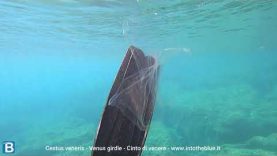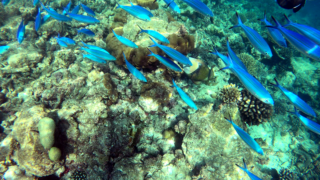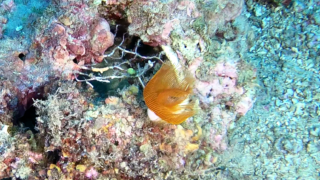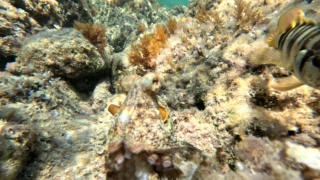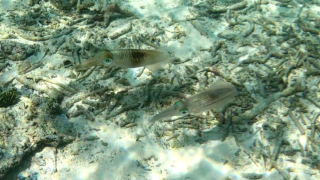Ctenofora - Cestus veneris - Venus girdle
Belt of Venus or girdle of Venus (Cestum veneris Lesueur, 1813) is a species belonging to the phylum Ctenophora, the only species of the genus Cestum. Ctenophora Cestus veneris Venus girdle www.intotheblue.it

From the information we have found it appears that it is common in all seas and oceans. We rarely meet it, perhaps because it is not quite so widespread in the Mediterranean Sea, or perhaps because we rarely dive in the month of March, when the water is rather cold and the marine life is quite still, excluding some species that seem to thrive in this. period like the Cestum veneris. Ctenophora Cestus veneris Venus girdle www.intotheblue.it

As you can see in the video we have met many specimens, some as small as a few centimeters, others up to one meter long and in some cases they seemed to aggregate in colonies of some specimens. Like other ctenophores eg: the Sea Walnut Mnemiopsis leidyi, when you meet it you can see a real explosion of specimens and it presents a form of bioluminescence even if barely perceptible, if stimulated upon contact it reacts by undulating for a few seconds.

Description
It has a flattened shape, is transparent, and the mouthparts are positioned in the center of the body, which sometimes measures more than a meter in length. If disturbed, the channels that develop along the body emit bioluminescent light.
Distribution and habitat
The girdle of Venus is widespread in practically all seas: the Gulf of Mexico, the Mediterranean, the South Pacific and the Atlantic.
https://it.wikipedia.org/wiki/Cestum_veneris

Belt of Venus belongs precisely to the philum of the Ctenophores which groups together transparent and gelatinous organisms, typically pelagic, whose body is crossed by ribs along which we notice a series of vibrating cilia. The eyelashes are arranged in a comb and hence the name which is equivalent to “bearers of combs”. In the tentacles or in the small combs, the cells are not stinging but adhesive, and it is these adhesive cells called “colloblasts” that capture the zooplankton these organisms feed on.
The small combs mentioned above are also capable of producing particular iridescences.
Their body, like jellyfish, is made almost entirely of water. Like coelenterates, the digestive organs are contained in a large internal cavity and the mouth is located at the extremity of the body. The individuals are all hermaphrodites with simultaneous egg and sperm production.
Gallery














